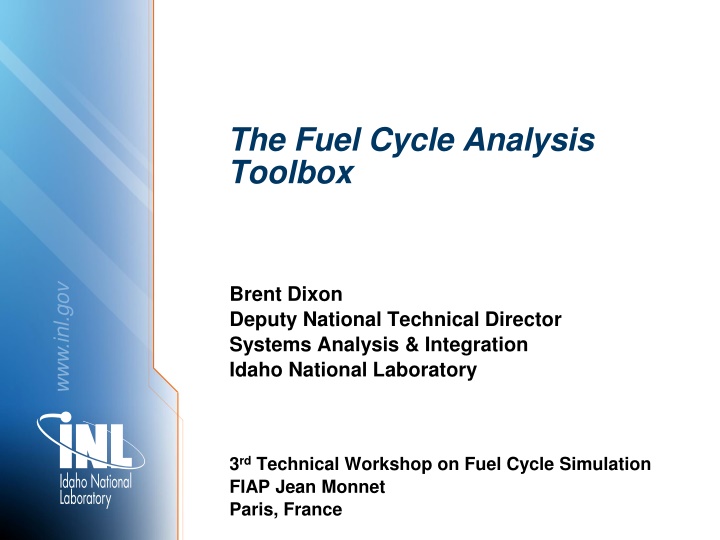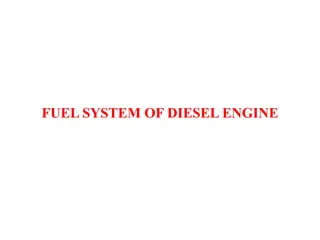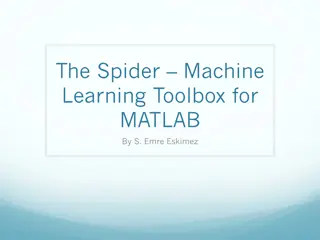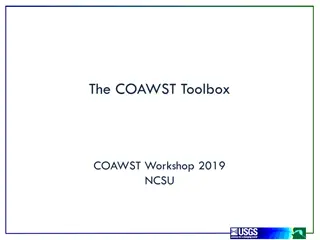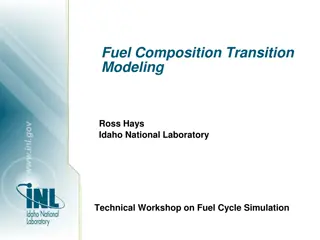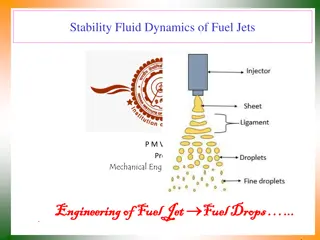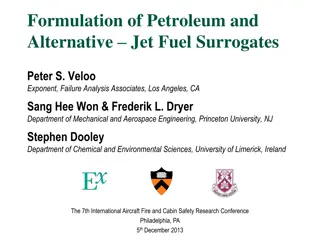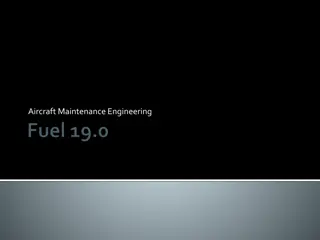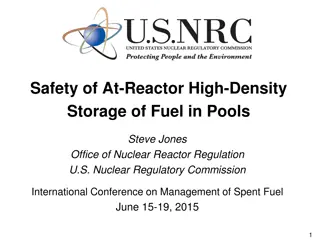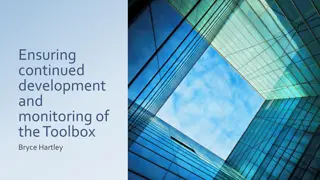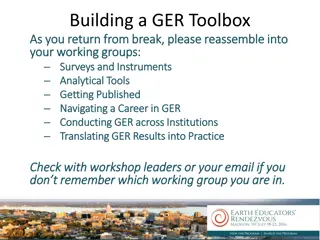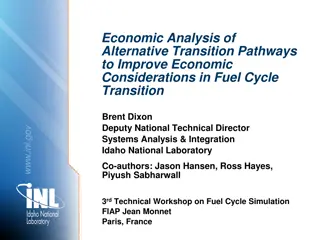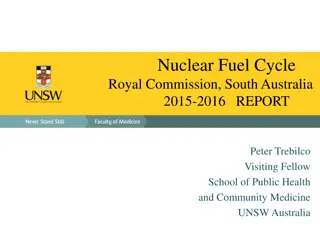Fuel Cycle Analysis Toolbox: Enhancing Understanding and Optimization
This presentation focuses on the analyses and evaluations essential for assessing the potential of a fuel cycle, emphasizing different time scales, system sizes, objectives, and audiences. It discusses the need for coupled analyses, various tools required, and opportunities for improvement through integration of different types of tools for optimization across disciplines. The toolbox includes reactor core performance tools, fuel cycle analysis tools, economic and financial risk analysis tools, market-based analysis tools, technology and fuel cycle evaluation tools, and collaboration and communication tools. Specific attention is given to understanding reactor core behavior and the processes involved in fuel cycle analysis.
Uploaded on Sep 18, 2024 | 4 Views
Download Presentation

Please find below an Image/Link to download the presentation.
The content on the website is provided AS IS for your information and personal use only. It may not be sold, licensed, or shared on other websites without obtaining consent from the author.If you encounter any issues during the download, it is possible that the publisher has removed the file from their server.
You are allowed to download the files provided on this website for personal or commercial use, subject to the condition that they are used lawfully. All files are the property of their respective owners.
The content on the website is provided AS IS for your information and personal use only. It may not be sold, licensed, or shared on other websites without obtaining consent from the author.
E N D
Presentation Transcript
The Fuel Cycle Analysis Toolbox Brent Dixon Deputy National Technical Director Systems Analysis & Integration Idaho National Laboratory www.inl.gov 3rdTechnical Workshop on Fuel Cycle Simulation FIAP Jean Monnet Paris, France
Introduction The Purpose of this presentation is to generate a discussion on: The different types of analyses and evaluations needed to assess the potential of a fuel cycle How these analyses are tailored when considering different time scales, system sizes, objectives, and audiences The ways these analyses are coupled The tools and data needed to support these analyses Opportunities to improve the process through embedding, linking, or otherwise integrating different types of tools How to support optimization over multiple disciplines
Background We recently updated our tools strategy We identified 30 analysis codes, databases, linkage tools and communication tools used in our program The tools were grouped into six areas In each area, we typically have duplication to support cross-verification of results Some areas involve multiple steps, with codes specialized to each step Some of the actual tools embed a simplified version of one tool type into an in-depth version of another tool type
The Tools in the Toolbox Reactor Core Performance Tools Fuel Cycle Analysis Tools Economic and Financial Risk Analysis Tools Market-based Analysis Tools Technology and Fuel Cycle Evaluation Tools Collaboration and Communication Tools
Reactor core performance tools and databases Understanding the behavior of a fuel cycle begins with understanding the physics in the reactor core How irradiation transforms isotopes, through nuclear fission, particle capture, and isotopic decay How this varies during each batch cycle as fissile isotopes are depleted or produced, and fission and activation products are produced and decay The primary steps where tool functionality can be divided are Processing of nuclear data files into suitable neutron libraries for use in deterministic and stochastics codes Lattice and neutron transport calculations to produce multi- group cross sections Core calculations to determine neutron flux, power production, fuel depletion, and discharged fuel composition Processing of output data as input to the next stage of analysis
Fuel cycle analysis tools The next analysis step considers the isotopic mass flows of the fuel cycle outside the reactor core Includes modeling the sourcing of fresh fuel, the disposition of spent fuel or the recycle of used fuel, and the disposition of wastes For a system in equilibrium, a number of fuel cycle performance metrics are calculated If the system is evolving, then fuel cycle scenario analyses are performed to understand that evolution, especially when it involves transition from one fuel cycle to another Dynamic analyses may assess a period of decades to centuries to model the primary infrastructure changes A key objective is the identification of any factors that may constrain the transition and how to alleviate those constraints
Economic and financial risk analysis tools and datasets Next, economic analyses are performed to assess the cost of these systems and to explore the economic aspects of alternative approaches Facility capital and operational costs are determined for each type of facility For dynamic analyses, facility size and utilization rates generate unit costs, which are combined with material flow rates to obtain system costs Supporting analysis investigate cost drivers and the cost of prior facility projects to provide a basis for unit production costs Datasets include historical costs of facilities, market price histories of front-end functions, design cost estimates of proposed facilities, and parametric estimates of advanced concepts
Market-based analysis tools Market analyses consider nuclear energy along with other energy sources Models assess supply and demand to determine the economic viability and competitiveness of the nuclear energy system in energy markets Two timeframes are assessed: The daily market where the objective is to understand system supply/demand balancing, any constraints the market may impose on nuclear generation, and revenue resulting from energy sales The long-term (multi-decade) evolution of the energy supply mix as demand changes, supply technologies change, and generation units are added, retired at end of life, or retired early due to poor economics
Technology and fuel cycle evaluation tools All of the information generated by the preceding analyses is used to generate formal assessments as requested by the sponsor These assessments typically require multi-variant decision support tools, as well as the identification and assessment of evaluation metrics Based on the result of these evaluations, specific fuel cycles may be identified for more focused and in-depth reassessments The technology readiness of advanced technologies needed for deployment of fuel cycles may also be assessed This information can be used directly for research planning and can be rolled up to support technology roadmaps as needed.
Collaboration and communication tools The final tools area focuses on communication with different types of users Results of analyses must be communicated to sponsors, managers, and policy makers Collaboration tools support tool developers and analysis teams Information catalogs make available archived assessments to technical communities Web-based tools provide simplified versions of tools available to the general public to enable learning by doing
Discussion The Purpose of this presentation was to generate a discussion on: The different types of analyses and evaluations needed to assess the potential of a fuel cycle How these analyses are tailored when considering different time scales, system sizes, objectives, and audiences The ways these analyses are coupled The tools and data needed to support these analyses Opportunities to improve the process through embedding, linking, or otherwise integrating different types of tools How to support optimization over multiple disciplines
